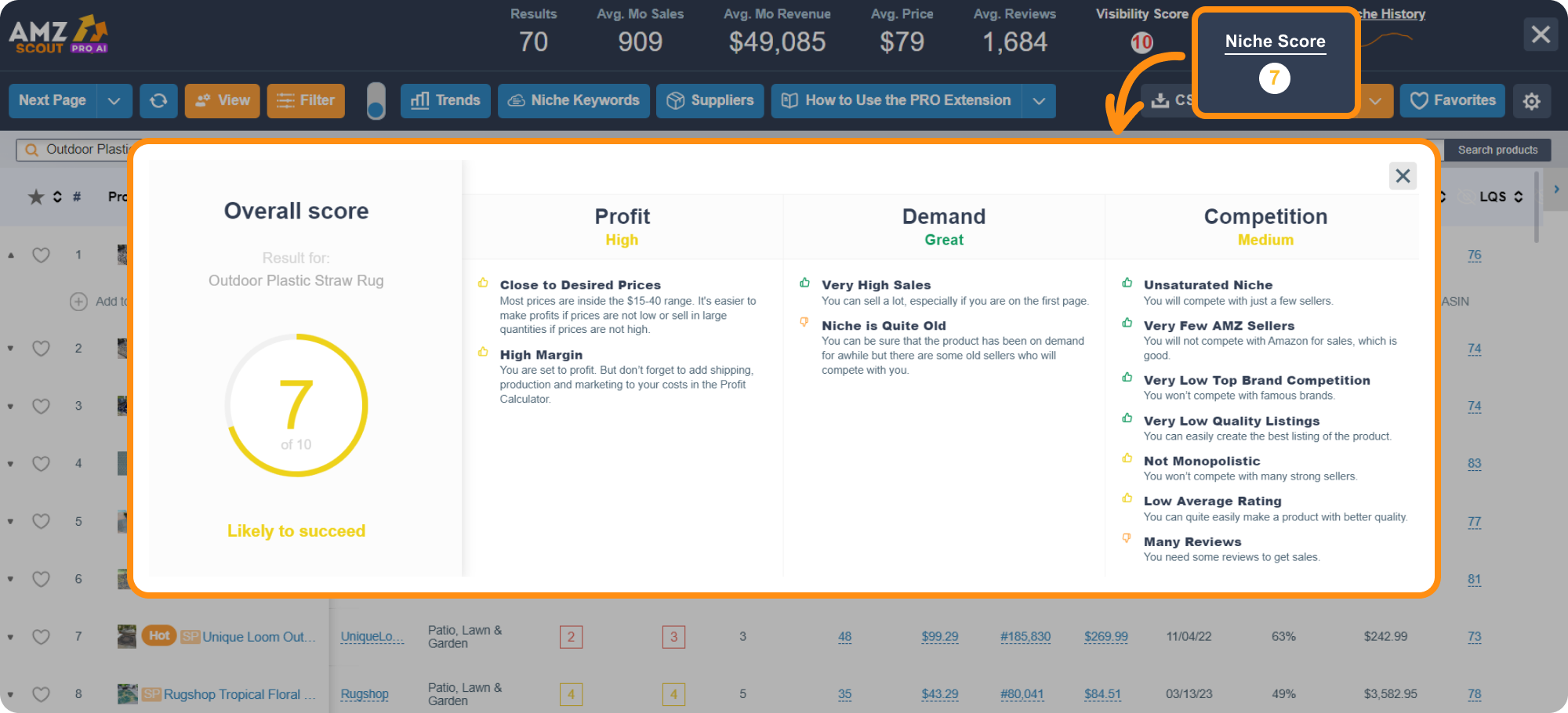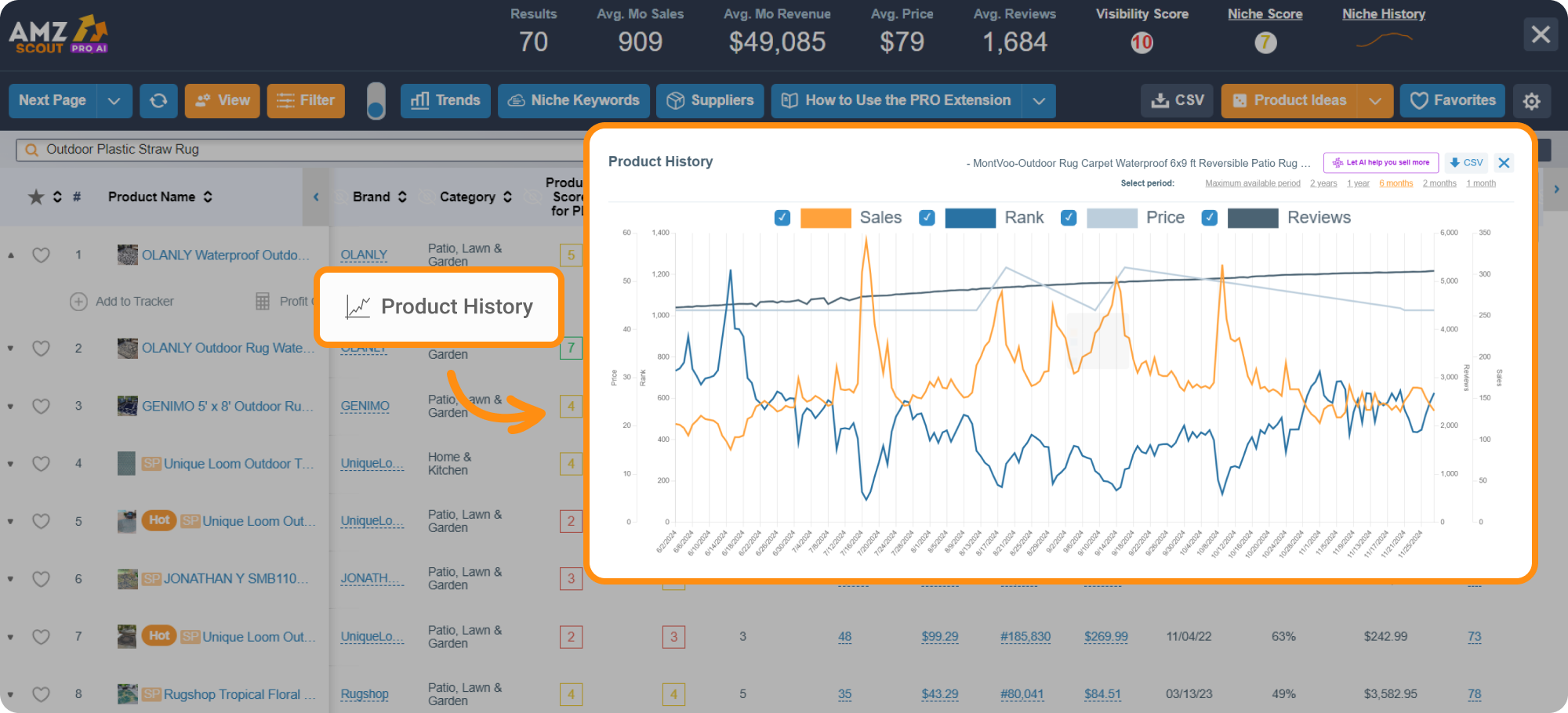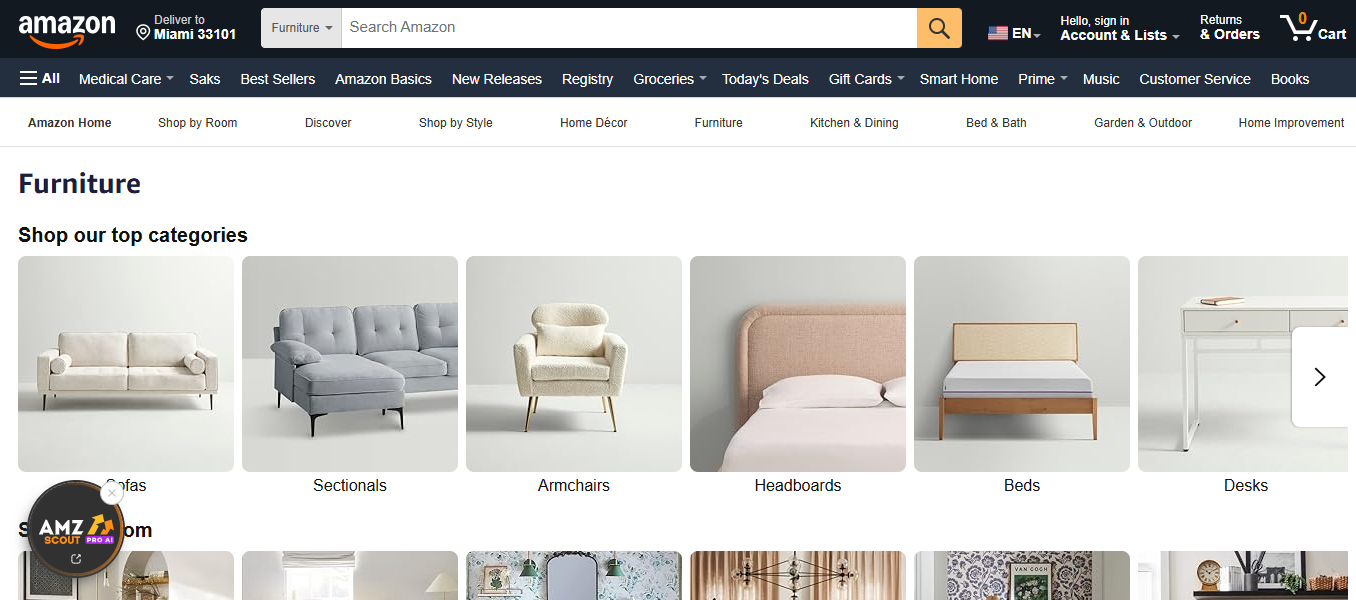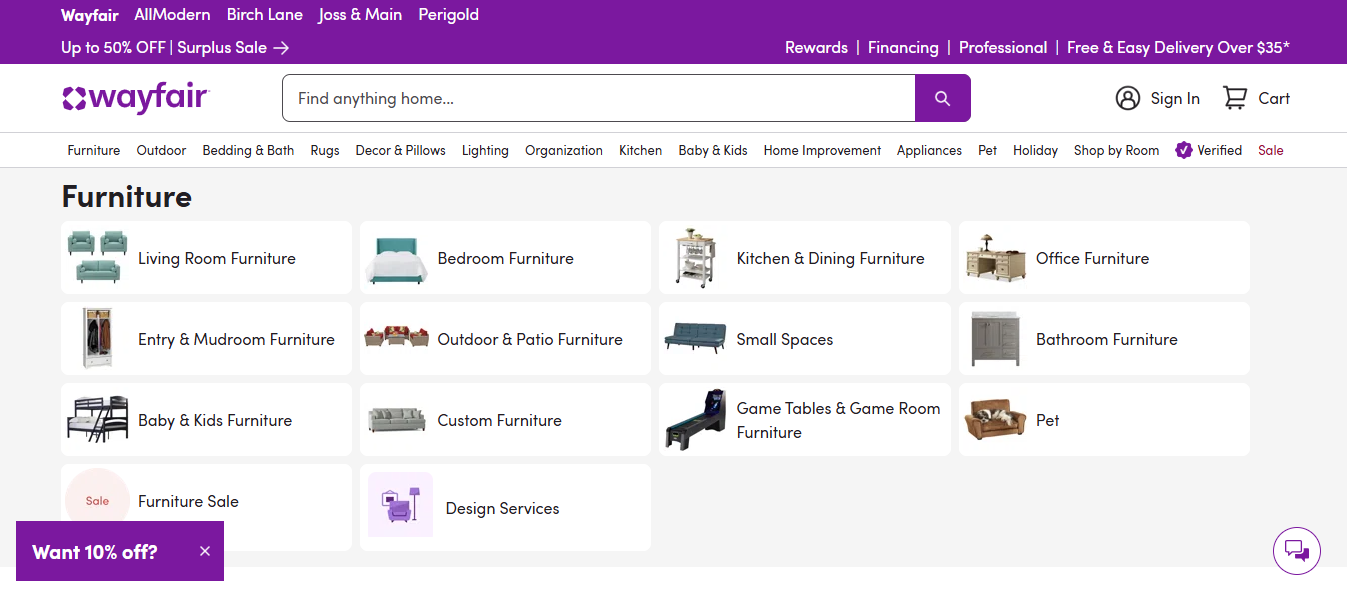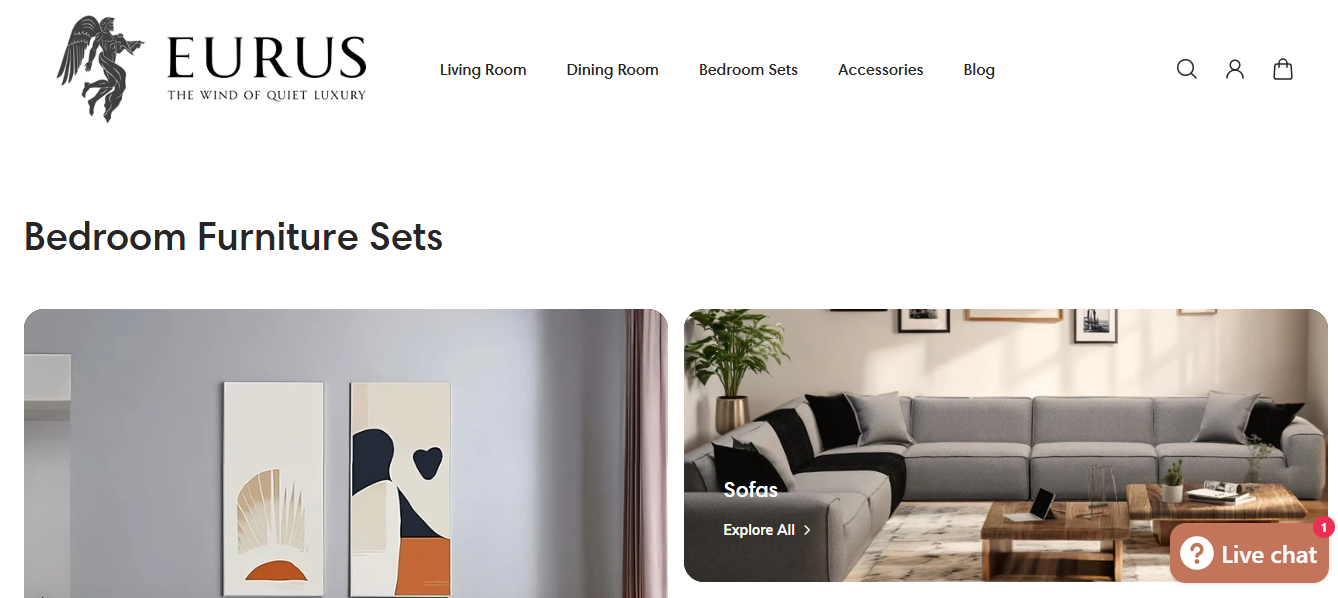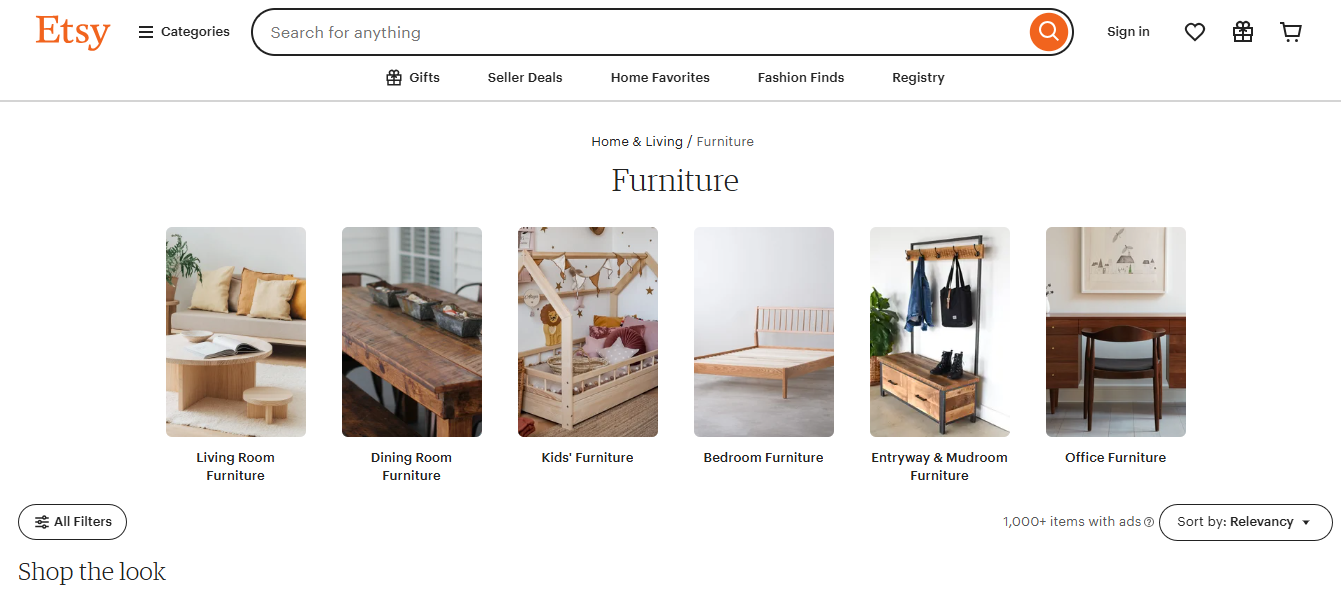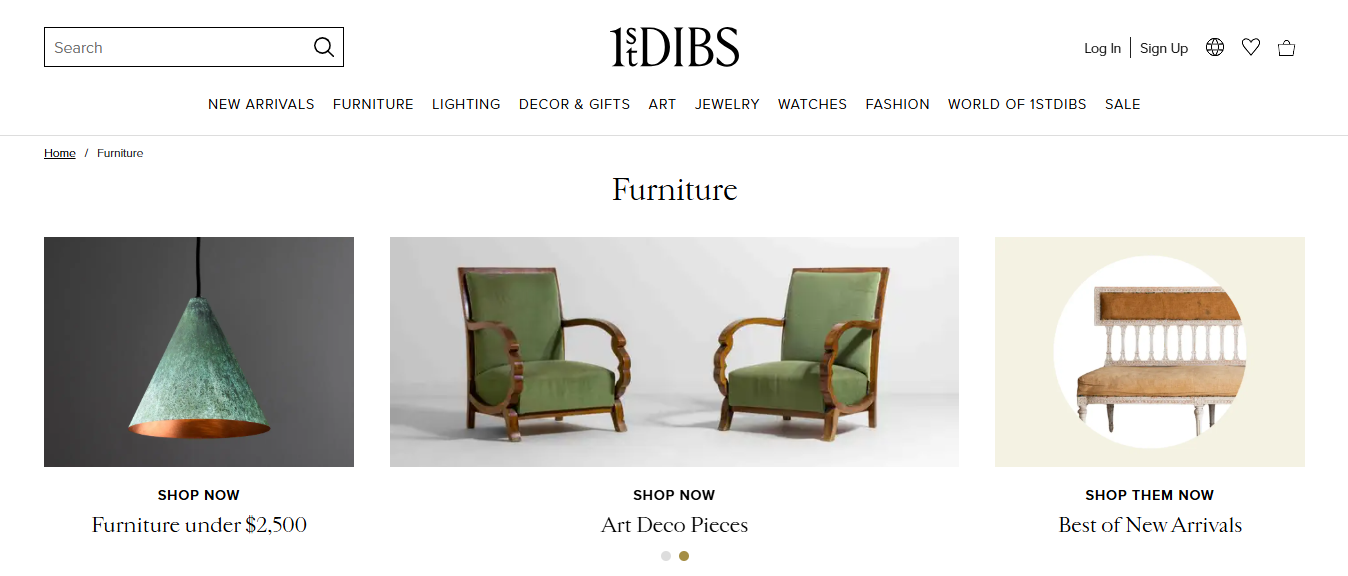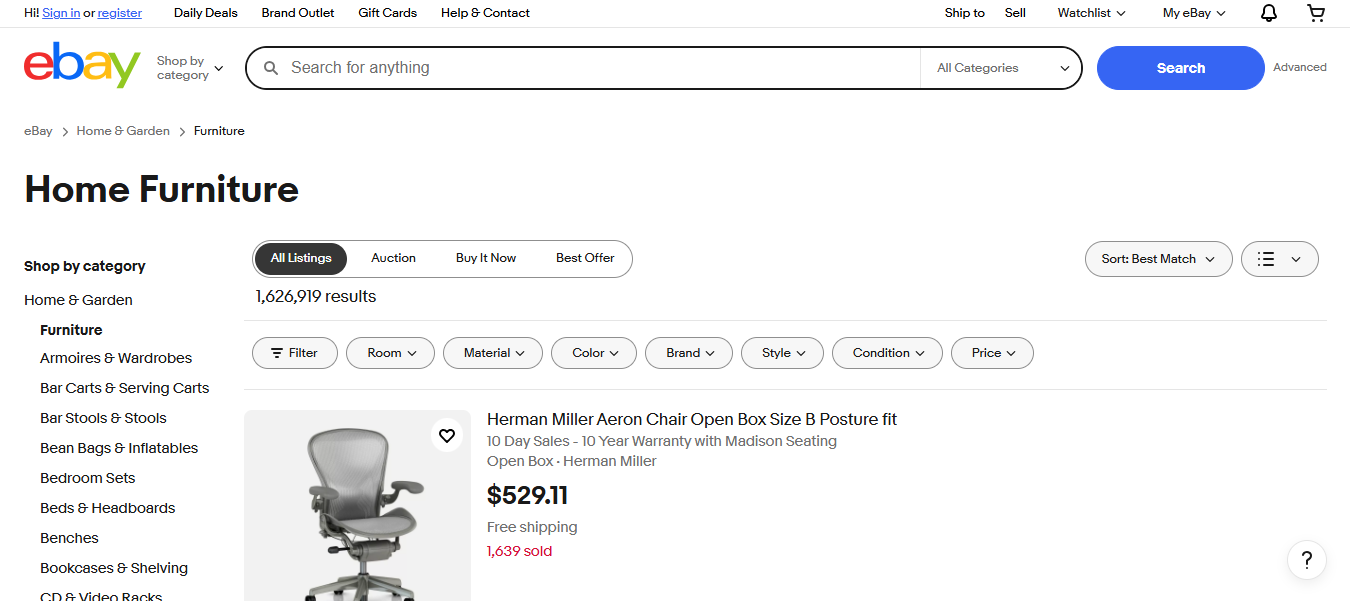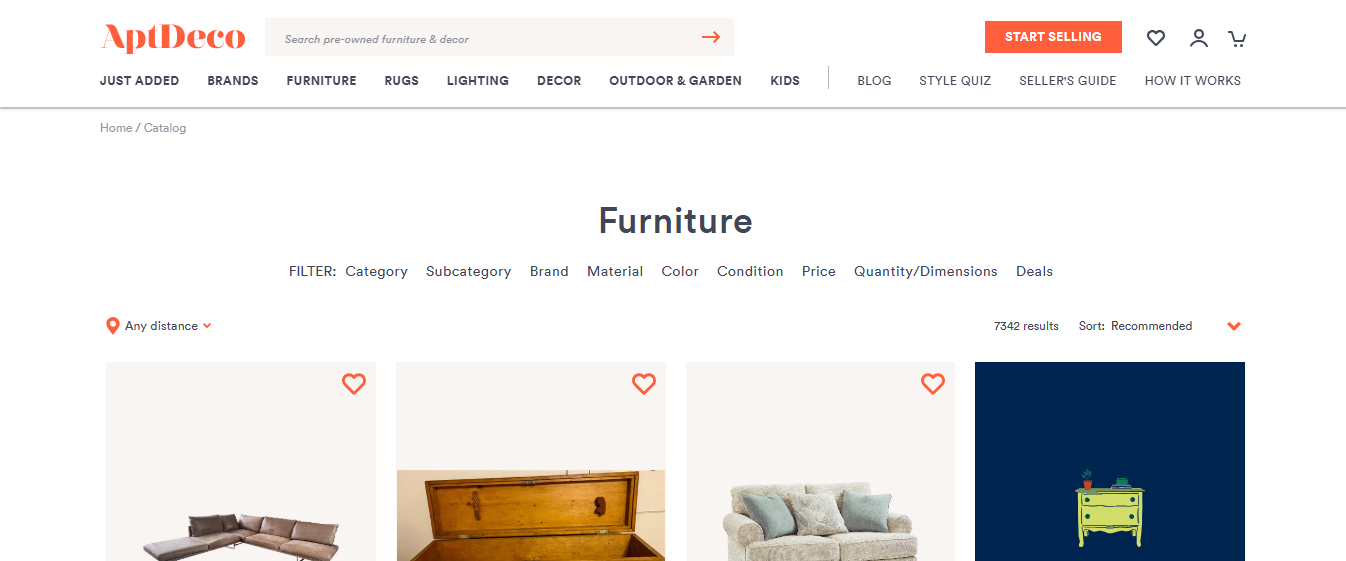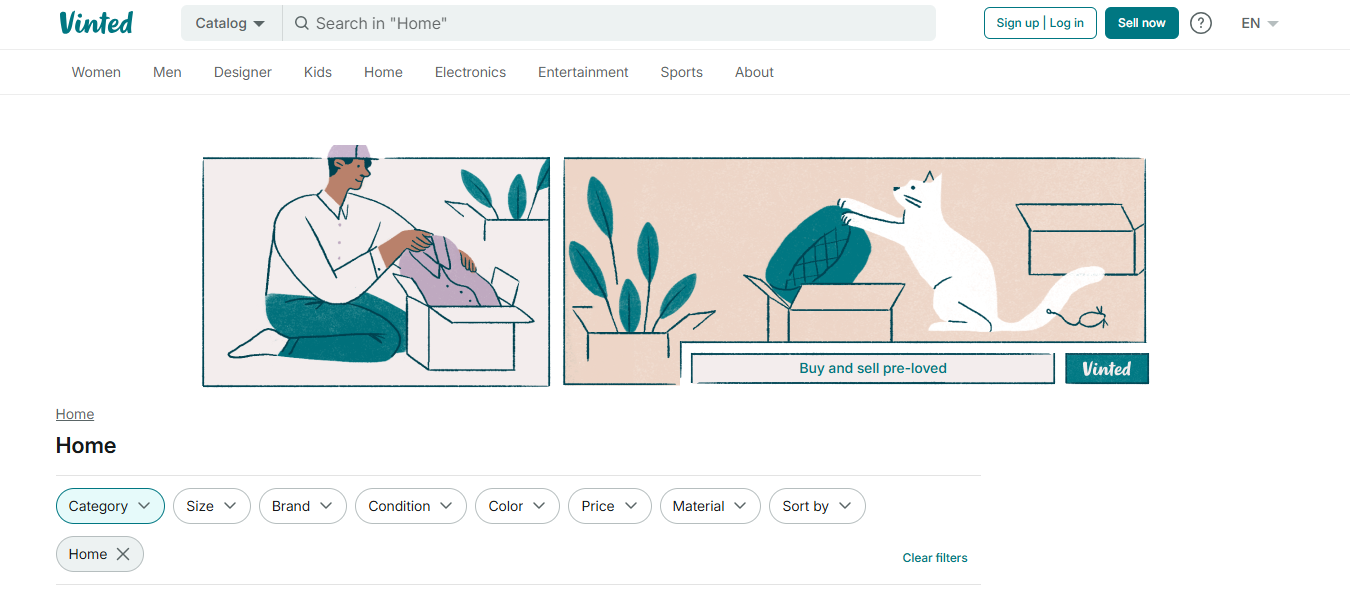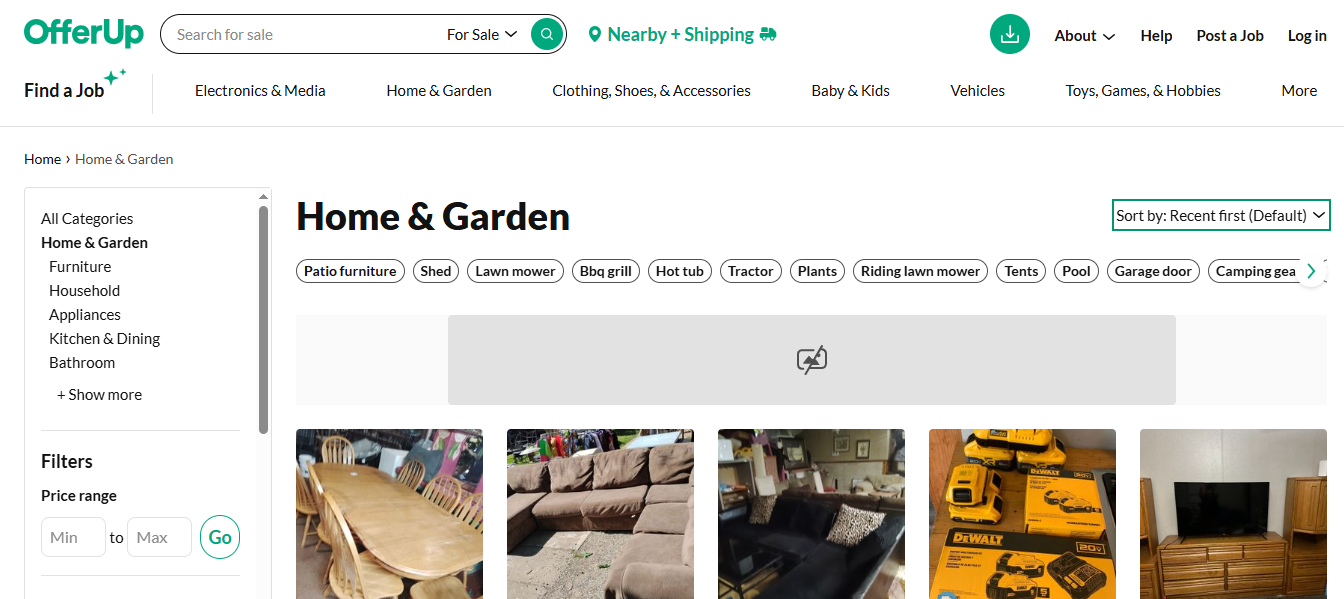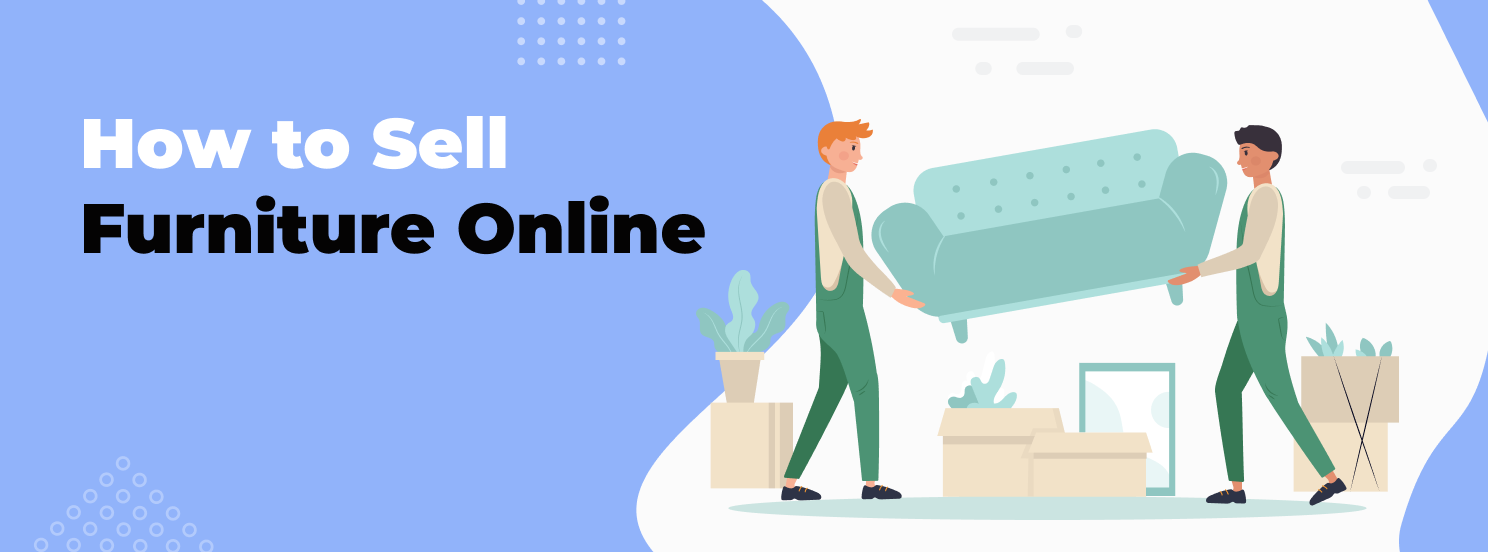
Selling Furniture Online: The Ultimate Guide
People love decorating their homes, making furniture one of the most sought-after niches. Sellers can take advantage of this demand for both functional and stylish items to generate profits. However, achieving success requires a solid strategy.
In this article, we'll guide you on how to sell furniture successfully and share actionable tips to boost your sales.
Is Selling Furniture Online Profitable?
Selling furniture online can be highly profitable, according to Statista, in the U.S. alone, the furniture e-commerce market generated $125 billion in revenue in 2024. With a growing interest in home decor, online shopping offers consumers an easy way to discover niche items, including space-saving and eco-friendly furniture.
Still, selling furniture comes with its own unique set of challenges, including high shipping costs. To succeed, sellers need a well-defined strategy that ensures healthy profit margins and supports long-term business growth.
Selling New Furniture Online
When selling new furniture, you have full control over what to sell and how to position it. Read on to learn how to sell furniture online effectively and turn it into a profitable business:
Step 1: Decide What Type of Furniture You Want to Sell
The first step of starting a furniture business is deciding what type of product you plan to sell. With so many available styles, materials, and sizes, it’s easy to feel overwhelmed.
To ensure that your product is worth your investment of time and money, evaluate your decision using these three core profitability criteria:
Demand: Aim for products that generate at least 100 sales/month.
Competition: Avoid oversaturated listings (on marketplaces) or categories dominated by well-established websites.
Profit margin: After deducting all costs (sourcing costs, shipping, fees), the item should leave room for sustainable business growth.
In the next section, we’ll explore how to identify profitable furniture products that meet these criteria, using Amazon as an example, since this is the leading platform in e-commerce and a strong indicator of broader market and consumer trends.
Assessing Product Idea Viability
Since Amazon and other platforms don’t share detailed sales data publicly, analytical tools are essential for research. With the help of the AMZScout toolkit, you can evaluate whether the product you have in mind is truly worth pursuing. Here’s how to assess its potential:
1. Install the AMZScout PRO AI Extension. Start your free trial by entering your email address.
2. Search for a product on Amazon. Enter a product or niche name into the Amazon search bar (for example, “coffee table”). Click on the icon in the upper right-hand corner of the page to open the extension.
3. Review the niche’s profitability. At the top of the screen, analyze the niche metrics, such as estimated sales and net margin.
4. Check the niche’s demand. Click Niche Score to see a breakdown of the competition and demand for the whole niche.
Note: Check the AI Analysis, which includes a detailed breakdown of how bestsellers in your niche perform. You'll get insights into competitors’ strategies, pricing models, sales potential, relevant keywords, and more.
5. Refine your product research. Narrow down your options. For example, sort by Estimated Sales to view top performers first, or apply filters such as:
Number of competitors
Number of reviews
Product rating
Suitability for private label or reselling
Any other criteria relevant to your business model
6. Assess product demand. For any item that catches your attention, click Product History located under the product to view its sales trend over time. This helps you determine whether the product has consistent demand, is seasonal, or shows signs of decline.
7. Calculate profitability. Click on the Profit Calculator under the product to estimate your potential profit after all costs. This helps ensure that the margin is strong enough to support business growth.
Tip for brand owners: For ideas on how to upgrade a particular item, open any product and click “AI Product Analysis,” then select “AI Product Improvement.” The tool will provide personalized suggestions for enhancements, along with insights into how each one can boost your product’s appeal and performance.
By conducting this type of research, you can focus on products with higher chances of success, and increase your sales and revenue potential.
Step 2: Set Up Your Store
Once you’ve chosen your product, the next step is deciding where to sell your furniture. There are many platforms available, but based on seller feedback and industry performance, here are the top five options:
Amazon
Amazon is one of the most powerful platforms for selling anything (including furniture) thanks to its massive customer base of over 300 million active users. It's trusted by shoppers for its fast delivery (including two-day shipping for Prime members) and hassle-free 30-day return policy. Amazon charges a $0.99 fee per item sold (or a monthly fee for professional accounts), along with an average 15% referral fee.
Sellers can use Amazon FBA for streamlined logistics, in which Amazon handles all aspects of your storage, shipping, and customer service. Sellers can also benefit from utilizing tools designed to help them analyze demand, monitor competitors, and find profitable opportunities in the furniture market, like AMZScout.
Wayfair
Wayfair is a furniture-focused platform, and is ideal for sellers with their own brand or product line. Each time an item is sold, the site pays the seller the wholesale cost. There are no commissions or listing fees charged to sellers. This model works well if you're producing new furniture and prefer focusing on fulfillment and quality while Wayfair manages the customer-facing side of the business.
Shopify
Shopify is perfect for sellers who want full control over their online store. You can fully customize your website, branding, and sales process without having to follow the strict rules of online marketplaces. However, the costs can add up. Premium themes start at around $300, and you’ll need to invest in traffic generation yourself.
Etsy
Etsy is the go-to platform for custom furniture and niche products, and its audience actively seeks unique, handcrafted, and often personalized items. Sellers can also create branded storefronts for a consistent look and feel. Keep in mind that Etsy charges a $0.20 listing fee per item and a 6.5% transaction fee on each sale.
1stDibs
1stDibs is ideal for premium or designer furniture. To sell on the platform, you must apply and provide detailed information about your inventory, business history, and industry references. Commission fees vary depending on the product type and price, but are generally higher than mass-market platforms.
Choosing the right platform depends on your business model, product type, and goals. Consider factors like fees, audience, logistics, and branding flexibility when making your decision.
Step 3: Source Your Products
If you’re not making the furniture yourself, you’ll need to source it from reliable suppliers. Here are several options to consider when sourcing finding pieces to buy and resell online:
Distributors and outlets: Look for discount retailers or liquidation platforms that offer new furniture at reduced prices. For example, ModernResale specializes in high-end designer furniture at lower costs.
Boutiques and showrooms: Smaller furniture boutiques sometimes offer clearance or off-season items that can be purchased and resold for profit.
Direct from brands: Contact furniture brands directly to inquire about wholesale options. This often requires a minimum order quantity, but it also gives you access to high-quality products and consistent stock.
Online marketplaces: Platforms like Alibaba connect you with manufacturers and wholesalers from around the world. Be sure to check supplier reviews, product ratings, and minimum order terms.
Dropshipping suppliers: Import products to your store and only pay when a customer places an order — platforms like ArtisanFurniture offer this dropshipping model for furniture sellers.
Local manufacturers and artisans: Partnering with regional furniture makers allows you to support local businesses while sourcing unique, handcrafted pieces.
Always check shipping costs, delivery times, and return policies. It’s also wise to order samples or read detailed reviews to assess product quality before committing.
Step 4: List Your Product
Once you decide where to sell, it’s time to upload your product listing. To avoid getting flagged or blocked, be sure to follow your chosen marketplace’s rules and formatting requirements. Here are a few general guidelines to help you create an effective listing:
Attractive visuals: Use high-quality images taken in good lighting. Show the item from multiple angles and include close-ups of important details or textures.
Compelling description: Write clear, engaging copy that highlights both the features and benefits of the item. Remember to include each piece’s dimensions, materials, care instructions, and style tips.
Relevant keywords: Optimize your title and description with thoroughly-researched keywords to help your listing appear in search results. On platforms like Instagram or Facebook Marketplace, use relevant hashtags for greater visibility.
Note: Amazon sellers can use the AMZScout AI Listing Builder, which generates SEO-friendly, compelling product listings in seconds, helping you save time and improve visibility.
Once your listing is live, you’re ready to start attracting buyers and make money from your furniture sales.
Step 5: Launch and Promote
Going live is just the beginning — now comes the challenge of attracting your first customers, especially if you’re new to selling. Here are a few effective strategies to kickstart your sales:
Promote your listings: Run targeted ads on Google, your chosen marketplace, or social media. Consider collaborating with influencers in the Home and Furniture niche to expand your reach.
Offer added value: If possible, provide extra services like free delivery or assembly. This can set you apart from competitors.
Build trust with reviews: On platforms like Amazon, programs such as Amazon Vine can help you collect initial reviews and establish credibility.
Leverage seasonal demand: Take part in major sales events, like Black Friday or Prime Day. During summer, highlight seasonal items (like patio furniture) to match buyer interests.
Note: Always make sure your promotional tactics comply with the rules of the platform you're selling on.
Selling new furniture online gives you the flexibility to curate your own product selection, build a recognizable store brand, and reach a wide audience. With the right strategy in place, it can grow into a scalable and rewarding business.
Selling Used Furniture Online
Selling old furniture differs from selling new pieces, since you’re working with pieces that are already available — both in terms of product selection and condition. Most used furniture is sourced from personal belongings, garage sales, or online auctions. Sourcing items locally is often the best option, as it helps to avoid high shipping costs.
Once you find the right product, here are some of the best platforms on which to sell it:
eBay
The site is especially optimal for selling vintage or collectible furniture, thanks to its auction-style format that attracts buyers seeking unique items. eBay charges 13.6% of the sale price (up to $7,500 per item), and sellers get up to 250 free listings per month. You can buy shipping labels directly from eBay, but you’ll need to pack the furniture and handle pickup or drop-off logistics yourself.
AptDeco
AptDeco is a specialized platform for furniture and home decor, and is especially useful for selling branded or designer pieces. The platform handles your listing, scheduling, delivery, and returns for you, offering a full-service experience. However, this convenience also comes at a cost, as AptDeco may take up to 60% of the final sale price in fees.
Facebook Marketplace
Facebook Marketplace is a convenient and easy-to-use platform with zero listing fees and a low 5% transaction fee. It works especially well for local sales and quick cash deals through nearby listings. However, since Meta doesn’t provide seller protection for items priced above $2,000, it’s safer to sell high-value furniture on platforms that offer better security.
Vinted
Vinted focuses on secondhand items that are often unbranded. It’s free to list and sell on this platform since buyers cover shipping costs, so it’s a great way for sellers to offload items quickly. However, prices on this platform tend to be low, making it more suitable for clearing out old furniture than turning a significant profit.
OfferUp
OfferUp is a mobile-first, peer-to-peer marketplace focused on local sales. This site is a good option for sellers looking to avoid shipping costs and make fast, in-person transactions. OfferUp charges a 12.9% fee on the final sale price. With nearly 20 million users, it offers solid potential, but activity depends on your local area. You need an active local community for consistent sales.
Each platform has its own pros and cons. To maximize visibility, consider listing your item on multiple platforms. Just be sure to track each listing carefully to avoid selling the same piece twice.
Tips for a Successful Sale
It doesn’t matter whether you're selling new or used furniture — success comes down to implementing an effective strategy. Follow these advanced tips to help you stand out and increase your chances of making a sale:
Add a video: If possible, add short video clips with 360° views to boost buyer confidence, as videos tend to attract more attention than photos.
Price smartly: Research similar listings and aim for a price that positions your item competitively. Use psychological pricing (e.g., $149 instead of $150) and consider offering limited-time discounts or bundles (such as a matching chair and table).
Boost visibility: On platforms that allow it, get paid ads to boost your listing, especially during weekends or holidays when traffic spikes. Relist or slightly update your post every few days to keep it appearing high among search results.
Provide good customer service: Respond quickly and professionally to inquiries. Polite, prompt replies increase buyer trust.
Even with the best strategy, some sales take time. Stay consistent and monitor which tactics bring results. With experience, you’ll develop a system that works for you.
Conclusion
The success of a furniture business depends on several factors, but selecting the right products is essential. Consider using the AMZScout toolkit to help you pinpoint profitable furniture pieces. This approach significantly boosts your chances of success and long-term business growth.

